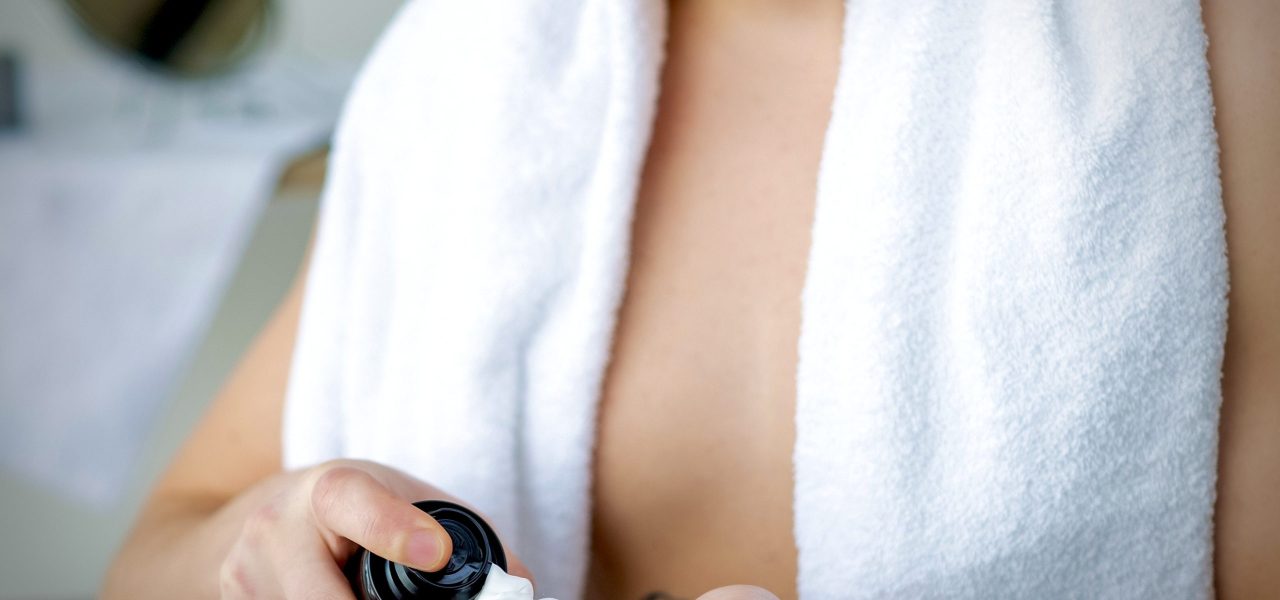How to Tackle Difficult Neck Shaving Problems
Shaving the neck presents a unique set of challenges that

Shaving Cream: Your Ultimate Guide
The right shaving cream can make all the difference when shaving. It can help you achieve a closer shave, prevent razor burn and ingrown hairs, and leave your skin feeling soft and smooth. With so many options available, choosing the right shaving cream can be overwhelming. In this ultimate guide, we will cover everything you need to know about shaving cream, including different types of shaving cream, how to choose the right one, and tips for getting the best shave possible.
People have been using shaving cream for centuries to lubricate their skin and soften their hair before shaving. The ancient Egyptians were the first to record the use of shaving cream, creating a paste for shaving by mixing animal fat and wood ash. In the 19th century, companies started producing shaving cream commercially, making it more widely available. Today, many people consider shaving cream an essential part of their grooming routine.
Shaving cream is a product that is applied to the face or body before shaving. Its purpose is to soften the hair, lubricate the skin, and provide a protective barrier between the skin and the razor blade. Surprisingly the cream can come in many different forms, including foaming and non-foaming, and can be scented or unscented.
There are several different types of shaving cream on the market, each with its own unique properties.
Foaming shaving cream is the most common type of shaving cream, It’s a cheap and easily accessible product. It comes in a pressurised can and is dispensed as a foam. Shaving foam is easy to apply and provides an instant thick lather that helps to lubricate the skin and protect it from razor burn. Generally this type of product is typically best for those with normal to oily skin.
One thing to remember about this type of foam is what is used to create it. Shaving foam is made by combining a shaving cream base with a propellant gas, usually propane or iso-butane. When the valve is opened, the gas expands, mixes with the base and creates foam. However, some of the propellents can be very drying for your skin. Has your skin ever felt tight post-shave? This may be the reason. Your skin should feel soft supple and hydrated post shave.
Non-foaming shaving cream is a cream that is applied to the skin without lathering. Consequently, it is typically thicker and more moisturising than foaming shaving cream, making it a good choice for those with dry or sensitive skin. This shaving cream can come in a jar, tube or bottle and is usually more expensive than foaming shaving cream.
Pure Shave Shaving Cream gives you the best of both worlds as it can be used simply as a cream but can also foam up when used with a shaving brush. That said, you can get a lower volume of foam by just rubbing it into your stubble for a minute or so.
Shaving soap is a type of shaving cream that comes in a tin or bar. It is typically used with a shaving brush, which helps to create a thick lather. This soap is often considered to be the most traditional form of shaving cream and is a popular choice among wet shavers. Generally, shaving soap is best for those with normal to oily skin.
Shaving gel is a type of shaving cream that comes out of the can as a gel and when rubbed into the skin turns into foam. The foam is created by a chemical reaction when the gel comes in contact with your warm skin – the chemical rapidly turns from its liquid state into a gas which reacts with the shaving cream base to create foam. One of the problems here is that the chemicals used can irritate some people and cause the skin to dry out. This is probably one to avoid if you suffer from shaving rash, razor burn or ingrown hairs.
Using a product like this drove me to create Pure Shave Shaving Cream as I suffered really badly from shaving rash and razor burn. My skin would always feel tight as a drum and painful post shave. With Pure Shave I have no rash and my skin always feels soft supple and hydrated post shave.
Choosing the right shaving cream can be a bit of a challenge. Here are a few things to consider when making your choice.
Your skin type should be the first thing you consider when choosing a shaving cream. If you have oily skin, a foaming shaving cream may be your best bet. On the other hand if you have dry or sensitive skin, a non-foaming shaving cream like Pure Shave Shaving Cream or shaving soap may be a better choice.
The coarseness of your hair can also play a role in choosing the right shaving cream. For example if you have coarse or thick hair, you may want to look for a shaving cream that provides a lot of lubrication or one that softens the hair effectively like Pure Shave. By comparison if you have fine hair, you may be able to use a lighter, less moisturising shaving cream.
The fragrance and ingredients in your shaving cream are also important to consider. Some shaving creams are scented, while others are unscented. If you have sensitive skin, you may want to opt for an unscented shaving cream to avoid irritation. You should also take a look at the ingredients list and avoid any shaving creams that contain ingredients that you are allergic to. Parabens and SLS are the main ‘baddies’ to avoid if you can.
Further reading on this can be found in our blog page “why we don’t use SLS”
Understanding the ingredients in your shaving cream can help you choose the right product for your skin type and preferences. Here are some common ingredients found in shaving creams:
Now that you know how to choose the right shaving cream, here are a few tips to help you get the best shave possible:
Before you start shaving, it’s important to prepare your skin. Firstly, this means washing your face with warm water to soften your hair and open your pores. You can also use a pre-shave oil or lotion to help lubricate your skin. As a matter of fact, if you use Pure Shave, you can use our shaving cream as a pre shave balm to really help soften the stubble.
Want to learn more about using Pure Shave Shaving Cream? check out our How To Guide – How to get the best out of Pure Shave
The type of razor you use can also affect the quality of your shave. Make sure your razor is clean and sharp. If you’re using a disposable razor, make sure you replace it regularly. For many years I have tried so many different razors but with the advent of the 5 blade razor my search is over. Above all, it really is personal preference here and what works for you.
Check out our Buyers guide to razors
When shaving, always shave with the grain of your hair to prevent razor burn and ingrown hairs. Use short, light strokes and don’t apply too much pressure, remember let the razor do the work. Rinse your razor frequently to prevent clogging.
That said, I shave against the grain as it’s the only way I can get a close enough shave. Many of my customers do this as well. I developed Pure Shave shaving cream to enable a smooth comfortable pain free shave no matter which way you shave
After you’ve finished shaving, rinse your face firstly with warm water to clean any shaving cream residue off your face and then with cold water to close your pores. Pat your face dry with a clean towel and apply a moisturiser or balm to soothe your skin. Pure Shave has a daily non greasy formula moisturiser available in our shop.
In conclusion, using a good shaving cream is essential for achieving a smooth and comfortable shave. As shown above by choosing the right shaving cream for your skin type, using it properly, you can ensure that your skin stays healthy and irritation-free. Whether you prefer aerosol shaving cream, tube shaving cream, or shaving cream soap, there is a product out there that is perfect for your needs.
Shaving cream comes in a can or tube and is dispensed as a foam or cream. Shaving soap is a solid puck or bar that is used with a shaving brush to create a lather.
While you can use soap instead of shaving cream, it’s not recommended as it can cause dryness and irritation.
Yes, you can use men’s shaving cream if you prefer. However, women’s shaving cream is typically formulated to be gentler on the skin and may be a better choice for those with sensitive skin.
You only need a small amount of shaving cream to get the job done. Start with an amount the size of a £2 coin and add more if needed.
You should use warm water to soften your hair and open your pores before shaving. Afterwards when you’ve finished shaving, rinse your face with cold water to close your pores.
It’s recommended that you change your razor blade every 5-7 shaves. A dull blade can cause razor burn and irritation. For more in depth information on this subject have a look at our blog piece How long does a razor last
Read our review in GQ Magazine click to read
Reading from outside the UK and want to try Pure Shave? – Use the contact form to arrange purchase.


Shaving the neck presents a unique set of challenges that
Looking for an updated approach to enhance your grooming
Copyright © 2022 Identity Productions t/a Pure Shave – London • Cookie Policy • Privacy Policy